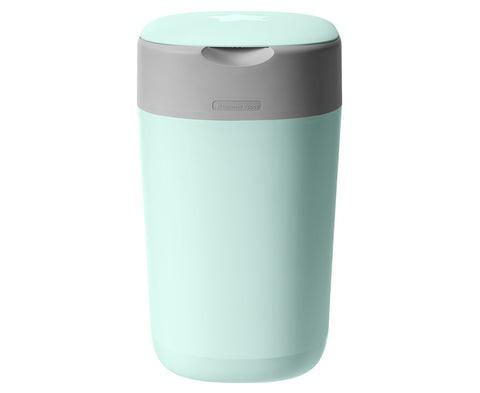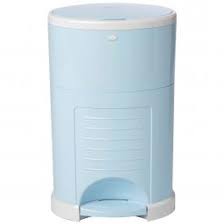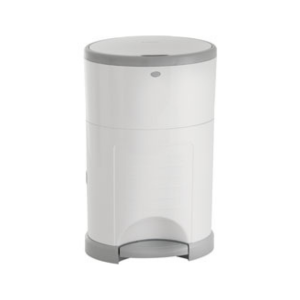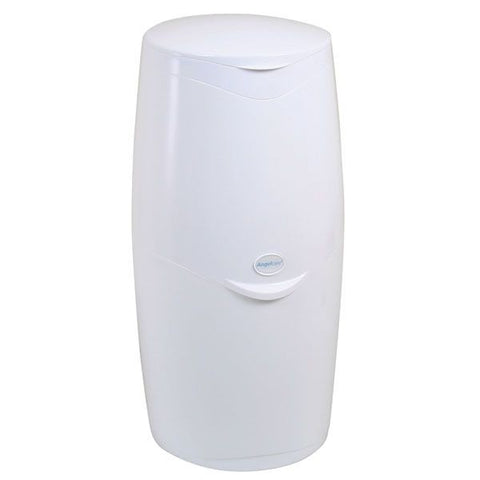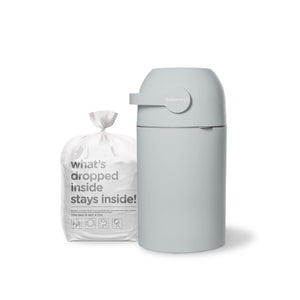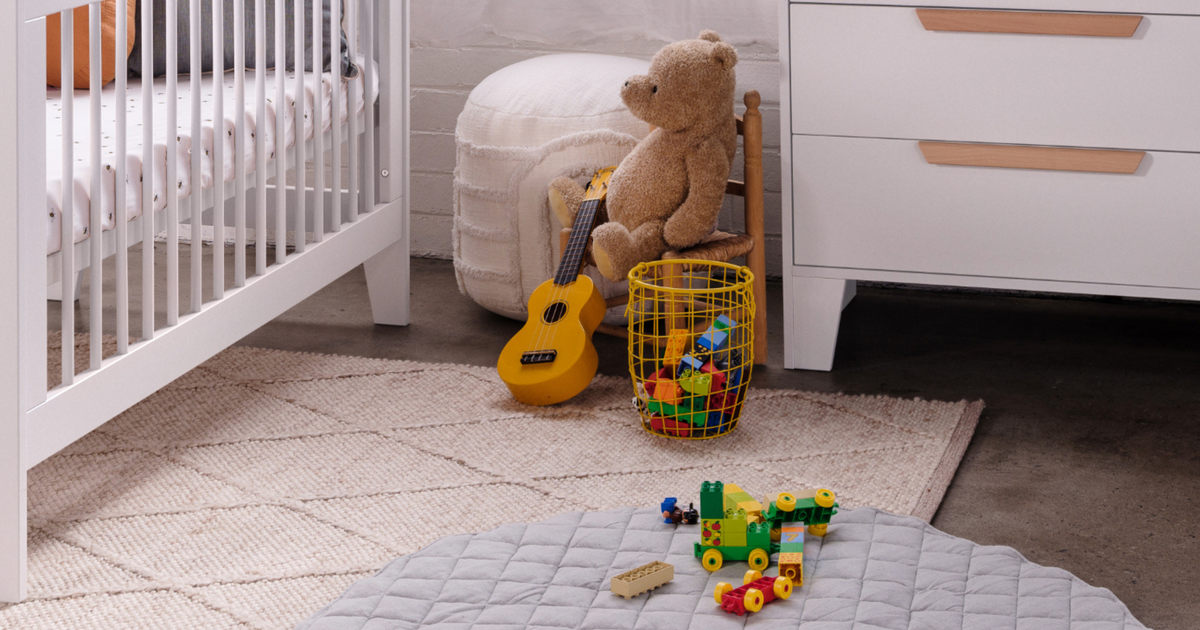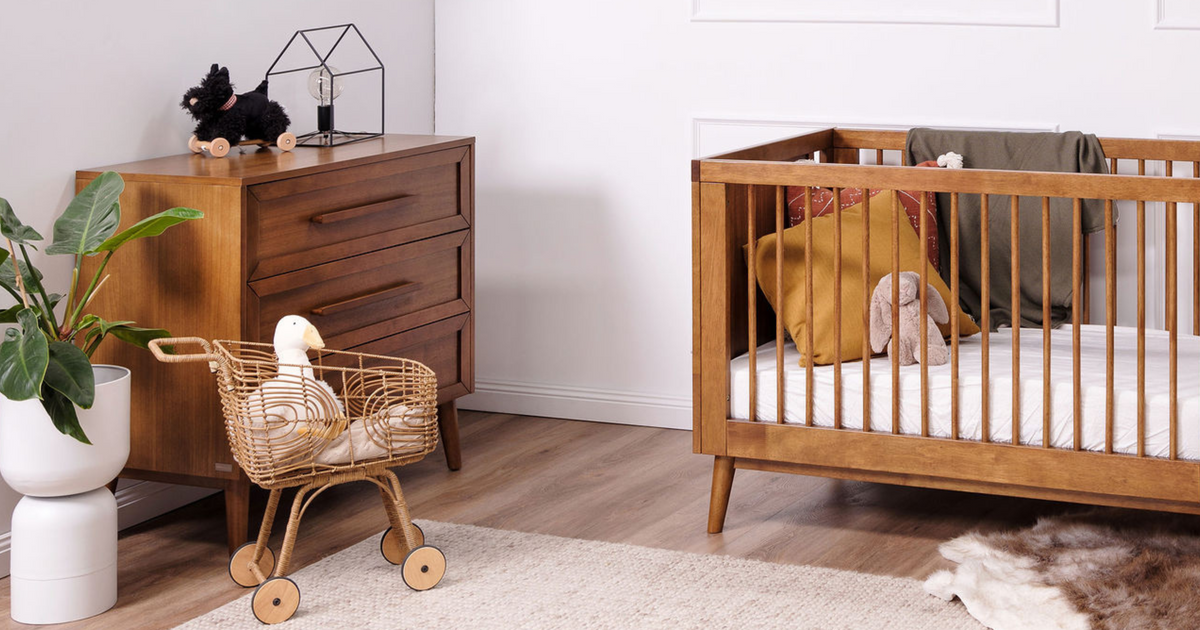6 of the best nappy bins in Australia 2023

Ah, the whirlwind of parenthood – a journey filled with sweet cuddles, sleepless nights, and yes, the constant stream of nappies. Amidst the joy (and occasional chaos), emerges an unexpected ally: the unassuming nappy bin. It's the unsung hero, helping to keep your nursery smelling fresh and to make changing time that little bit easier.
Convenient, compact, odour-proof and aesthetic? We’ve got you covered with six of the best nappy bins available in Australia. As it turns out, you don’t have to compromise on style for great functionality. We’re all about less fuss, more cuddles!
What to look for in a nappy bin
There are a wide range of nappy bins available on the market. Before investing in one, it’s helpful to know what to look for. Here are some things to keep in mind:
-
How well does it contain the odour?
Nappies can be quite potent, so the ability to contain odours is by far the most important consideration when choosing a nappy bin. You want to keep the nursery smelling fresh, but you also don’t want to be overpowered each time you open the lid! Nappy bin manufacturers take different approaches in dealing with this, from varying bin materials, to clever internal designs. Because you can’t road test its effectiveness prior to purchase, we recommend reading reviews from real parents to make an informed decision.
-
How easy is it to use?
You’ll be using the bin multiple times a day, so choosing an easy-to-use design is important - particularly when it’s 3am and you’re running on minimal sleep! While some parents prefer hands-free (ideal when holding the baby in one arm), this can actually reduce the bin’s effectiveness at odour containment. We recommend looking at bins that are one-hand use with a medium size opening to find the best balance between usability and effectiveness.
We’re not just talking about nappy disposal either. Some bins offer fantastic odour containment, but their internal designs are so complex that it takes ages or an Engineering degree to change the liner. It’s good to strike a balance.
-
How big is it?
To make your life as easy as possible, choose a bin that can store at least a full day’s worth of nappies. However, keep in mind that while extra-large bins can save you the legwork of frequent trips to the wheelie bin, the longer the nappies stay in the bin (and the more there are), the more the odours have time to increase… chances are you won’t want to keep more than a few days’ worth in your bin at a time.
As a guide, you can expect to use 8-12 nappies per day for newborns, reducing in number to about 6-7 per day for 5 months to 2 years. A compact design can be tucked neatly away, giving you and your little one more space to move around.
-
How much is it going to cost you over time?
While the price of the bin is important, the initial cost is often not as important as the overall price you’ll be paying down the line. Some of the most affordable bins on the market actually work out to be more expensive over time if they are only compatible with same-brand liners or cassettes (which aren’t usually cheap!).
When parents are bound to expensive brand liners, they are often scared to waste them and end up changing the liners less frequently, which can in turn build up unnecessary smells. It’s a budget game-changer to calculate the overall cost of use over the life of the bin and liners. In fact, we think it’s so important that we did the maths for you – just have a look at the table near the end for a full breakdown of each brand.
Choosing a quality bin, with great functionality, that also offers the ability to use supermarket bin liners (instead of branded liners or cassettes), will usually offset the initial cost and be the smartest move long-term.
-
Is it child-proof?
If you are purchasing the bin for your first child, this may not be a consideration you need to make. However, for parents of toddlers, it’s worth choosing a bin that’s smarter than your toddler - you’ll thank us later.
-
How eco-friendly is it?
There is a growing preference for plastic-free options. If that’s you, but you don’t want to go the washable cloth liner route, consider recyclable liners, liners (or bins) made of recyclable materials, or liners that don’t individually wrap each nappy (using less plastic overall). If you are going the cloth liner route however, it’s good to know that there are cloth-compatible bins out there!
There are a wide range of nappy bins available in Australia. We’ve compiled their key features, pros and cons to help you find the best fit for your needs and budget. This is also a great way to visually determine if it would be an asset to your nursery aesthetic based on its style and the colours available.
Discover the best nappy bins available in Australia

Babyrest Aster
RRP$109* | Holds up to 25 nappies
- Flip the handle over for the bin's opening to appear and then flip to close (contents remain hidden)
- Protective seal prevents odours from escaping
- Matte finish
- No special bags required (cost-saving over time)

Ubbi
RRP$149* | Holds up to 50 nappies
- Extra-large size makes it ideal for parents of multiples
- Powder coated steel body
- Rubber sealing gaskets
- Also compatible with cloth nappies
- No special bags required (cost-saving over time)

Tommee Tippee
RRP$40* | Holds up to 28 nappies
- Twists and individually wraps each nappy to seal odours
- Multilayer, bio-based antibacterial GREENFILM™
- Bins and refill chassis are made from 98% recycled and fully recyclable plastic
- Expensive brand-only cassette refills

Dekor Plus
RRP$131* | Holds up to 60 nappies
- Extra-large size makes it ideal for parents of multiples
- Foot pedal for hands-free use
- Also compatible with cloth nappies
- Large opening for ease of use
- No special bags required (cost-saving over time)

Korbell
RRP$39* | Holds up to 40 nappies
- Dupe of the more expensive Dekor Plus
- Foot pedal for hands-free use
- Interior locking lid traps odours inside
- Lightly scented, biodegradable liners
- Requires brand liners

Angelcare
RRP$39* | Holds up to 28 nappies
- Twists and individually wraps each nappy to seal odours
- Bins and refill chassis are made from 98% recycled and fully recyclable plastic
-
Expensive brand-only refills
How do they compare where it counts?
There are a range of options available on the market at various price points. We’ve gathered all the specs in one place to make the process of figuring out what you’re looking for easier. We’ve also done the maths to help you see how much each bin will cost you over their years of use.
This is a particularly helpful tool for understanding how the different brands compare pricewise over time of use.
|
|
|
Ubbi |
|
Dekor |
Korbell |
Angelcare |
|
Capacity (nappies) |
25 |
50 |
28 |
60 |
40 |
28 |
|
RRP AUD*(initial purchase) Please note: prices vary from store to store |
$109 |
$119 |
$40 |
$151 |
$39 |
$39 |
|
Liner cost per 5,000 nappies |
|
|
$355 (brand) |
|
$133 (brand) | $244 (brand) |
|
Liners/ Cassettes |
|
|
Only brand cassettes |
|
Only brand liners |
Only brand cassettes |
|
Size |
23.5 x 25.5 |
31.75 x 22.23 |
29.5 x 25.8 |
24.77 x 31.75 |
34 x 24 |
28.5 x 25 |
|
Weight |
2.05 kg |
2.34 kg |
1.57 kg |
2.9 kg |
1.5 kg |
1.93 kg |
|
Bin materials |
Plastic |
Steel, rubber |
Recycled + fully recyclable plastic |
Closed cell ABS plastic |
ABS plastic |
Plastic |
|
‘Green’ liners compatible |
✓ |
✓ |
✓ |
✓ |
✗ |
✗ |
|
Hands-free operation |
✗ |
✗ |
✗ |
✓ |
✓ |
✗ |
|
Colours |
White, grey, sage, terracotta |
White, blue, green, pink, yellow + |
White, blue, pink |
White, blue, green, pink, grey |
White, blue, green, pink |
White |
So which nappy bin should you choose?
In the world of nappy bins, choices abound, each catering to different needs. While some boast larger capacities, most parents tend to prioritise frequent liner changes to keep things as fresh as possible and reduce the odour build up. For parents of multiples however, a larger capacity does make sense - nobody wants to change the bin a few times a day!
As you begin to unlock your skills as a bona fide nappy wizard, you’ll soon realise that your nappy bin may not have the illustrious post-nursery lifespan that you initially intended for it at purchase. While some brands market themselves as suitable for use post-nursery, it is unlikely that you will want to keep any of the bins for that long, as many only have very small openings not suited to everyday use, and even the best bin material will accumulate odours (especially nappy odours!) over years of use. Lingering smells and the evolving needs of your growing family will likely lead to new solutions as your little ones grow up.
So what really counts? Odour control is the main factor. We recommend choosing a bin with excellent odour-proof technology. From there, you can look at the cost – do you prefer smaller upfront costs or smaller lifetime of use costs? And finally, you can choose a bin based on what would best complement your nursery aesthetic. If you choose a bin that will make changing times easier and bring you joy to look at, you can’t go wrong! Happy changing!
Anstel has a team of passionate expert representatives. Get in touch with us today with any questions about your baby and toddler essentials.
More nursery related blogs:
- Babyrest Nova vs Leander Matty Change Mats
- How safe is your nursery? Your 10-step safety checklist
- Boori vs Babyrest: Comparing their cots, mattresses and changing solutions
- Everything you need to know about tummy time
- Is it safe to buy second-hand nursery items?
- How this Aussie mum finally found the perfect cot mattress


